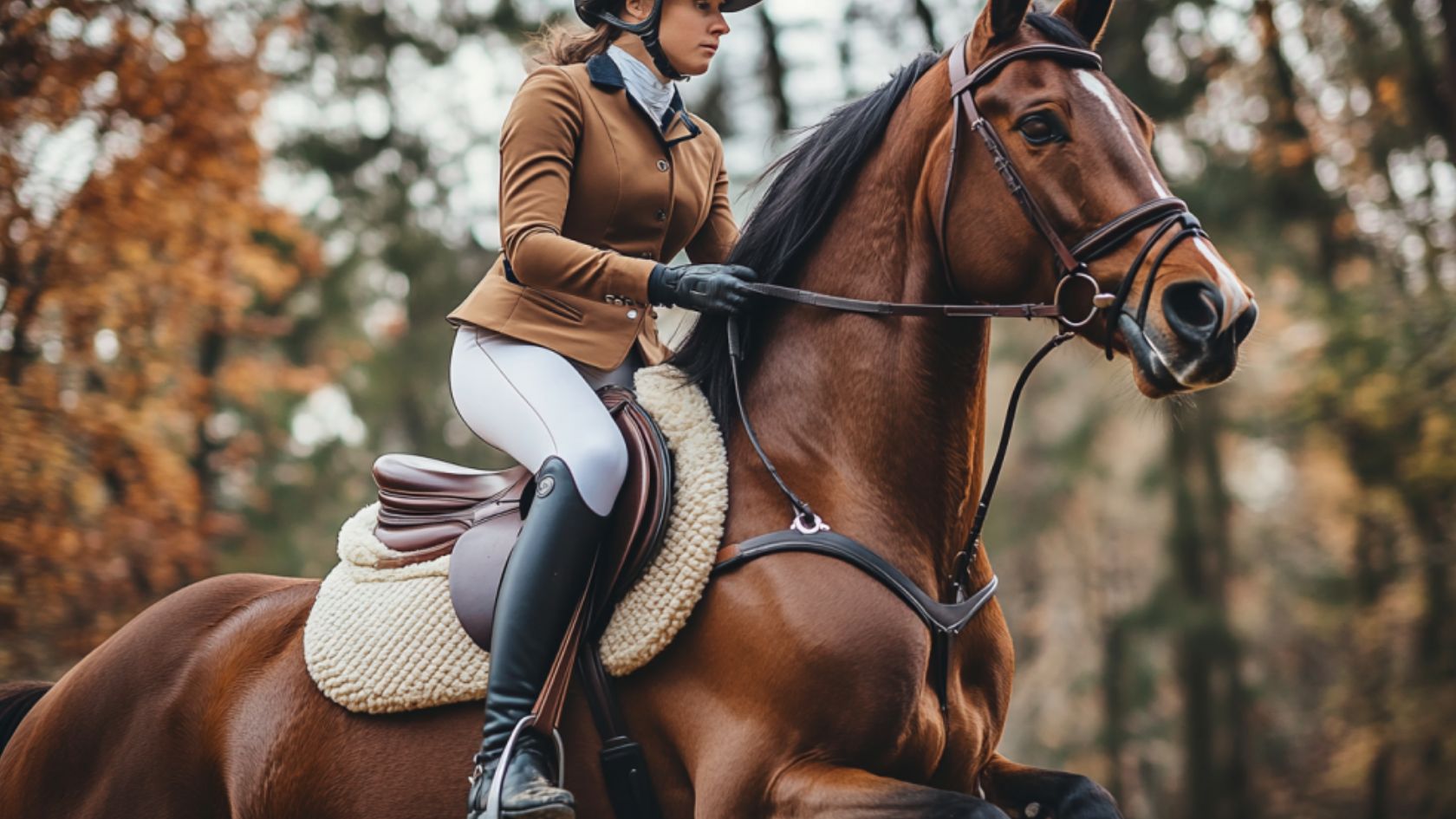Horse riding is more than just a recreational activity; it’s a profound experience that fosters a deep bond between rider and horse. The thrill of feeling the powerful movement of a horse beneath you, coupled with the beauty of nature surrounding you, creates a unique sense of freedom and connection. However, with this exhilarating experience comes the responsibility of ensuring safety for both the rider and the horse.
According to experts, the most important aspect of horse riding is ensuring the safety of both the rider and the horse. Therefore, proper safety equipment is not just a choice but a necessity. Having the right safety equipment ensures a safe and enjoyable riding experience. This post will cover the essential safety gear every rider should consider.
1. Riding Helmet
A properly fitted riding helmet is one of the most critical safety equipment for any rider. A riding helmet is designed to protect your head in a fall or collision. Here are a few key points to consider:
- Safety Standards: Ensure your helmet meets safety standards set by organizations like the ASTM (American Society for Testing and Materials) or the SEI (Safety Equipment Institute).
- Fit and Comfort: Choose a helmet that fits snugly without being too tight. It should sit level on your head, just above your eyebrows, and not move when you shake your head.
- Type: Different helmets are for various riding disciplines (e.g., jumping, dressage, trail riding). Make sure you select one that is appropriate for your riding style.
2. Boots
Riding boots are essential for both safety and comfort. They should have a small heel to prevent your foot from slipping through the stirrup, which can be dangerous. Consider the following:
- Material: Leather boots are traditional and provide good support, while synthetic materials offer easier maintenance and a range of styles.
- Height: Tall boots can provide additional leg support and protection, while paddock boots are more versatile for everyday use.
- Sole: Look for boots with a smooth sole to easily slide in and out of the stirrup.
3. Body Protector Vest
A body protector vest offers extra protection for your torso during falls. While not always required, it can be a good addition for riders who engage in more strenuous activities, like jumping or eventing. Consider the following:
- Fit: A vest should fit snugly but not restrict movement. You should be able to bend and move comfortably while wearing it.
- Certification: Look for vests that meet safety standards, like the BETA (British Equestrian Trade Association) certification.
4. Gloves
Riding gloves enhance grip and comfort, protecting your hands from blisters and rope burns. Here are some points to consider:
- Material: Choose gloves made from breathable materials for warm weather or insulated materials for colder rides.
- Grip: Look for gloves with textured palms for better grip on the reins.
- Fit: Ensure they fit snugly without being too tight, allowing for good talent.
5. Chaps or Tights
Many riders opt for chaps or riding tights for added protection and comfort. These offer a better grip on the saddle and protect your legs from the elements and potential scrapes. Consider:
- Material: Look for breathable, stretchy fabrics for comfort and flexibility.
- Fit: Ensure they fit snugly without being restrictive.
6. Reflective Gear
Reflective gear can enhance your visibility if you ride on roads or in low-light conditions. Consider adding:
- Reflective Vests: These can be worn over your riding attire to ensure motorists see you.
- Reflective Bridle or Saddle Accessories: These also add visibility to your horse.
7. Emergency Kit
An emergency kit is vital for both you and your horse. It should include:
- First Aid Supplies: Bandages, antiseptic wipes, gauze, and personal medications.
- Horse Supplies: Horse bandages, wound care items, and necessary medications.
- Contact Information: Keep a list of emergency contacts and vet information in your kit.
Horse riding is a rewarding experience that should be enjoyed safely. Investing in proper safety equipment is essential for every rider, regardless of skill level or experience. This investment protects you from potential injuries and allows you to ride with confidence and peace of mind.





